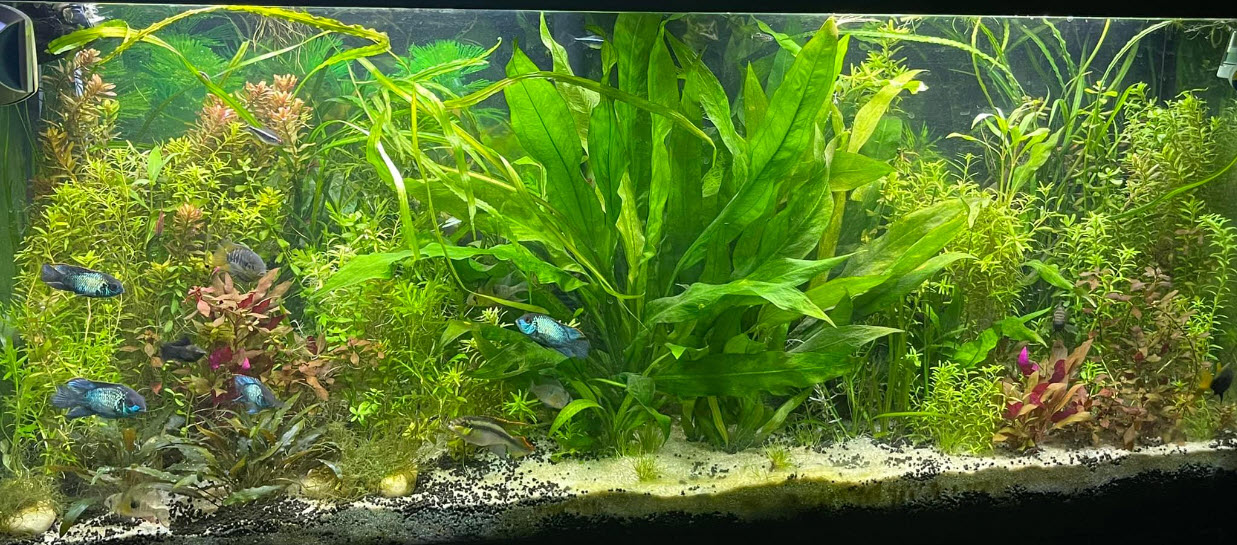
The easiest approach to planted aquarium fertilizing is to simply use Aquarium Co-Op Easy Green™ per the instructions on the container. Easy. Simple. Reasonably effective but expensive. For a far more in-depth and very boring analysis of this ready made fertilizer and similar products read on.
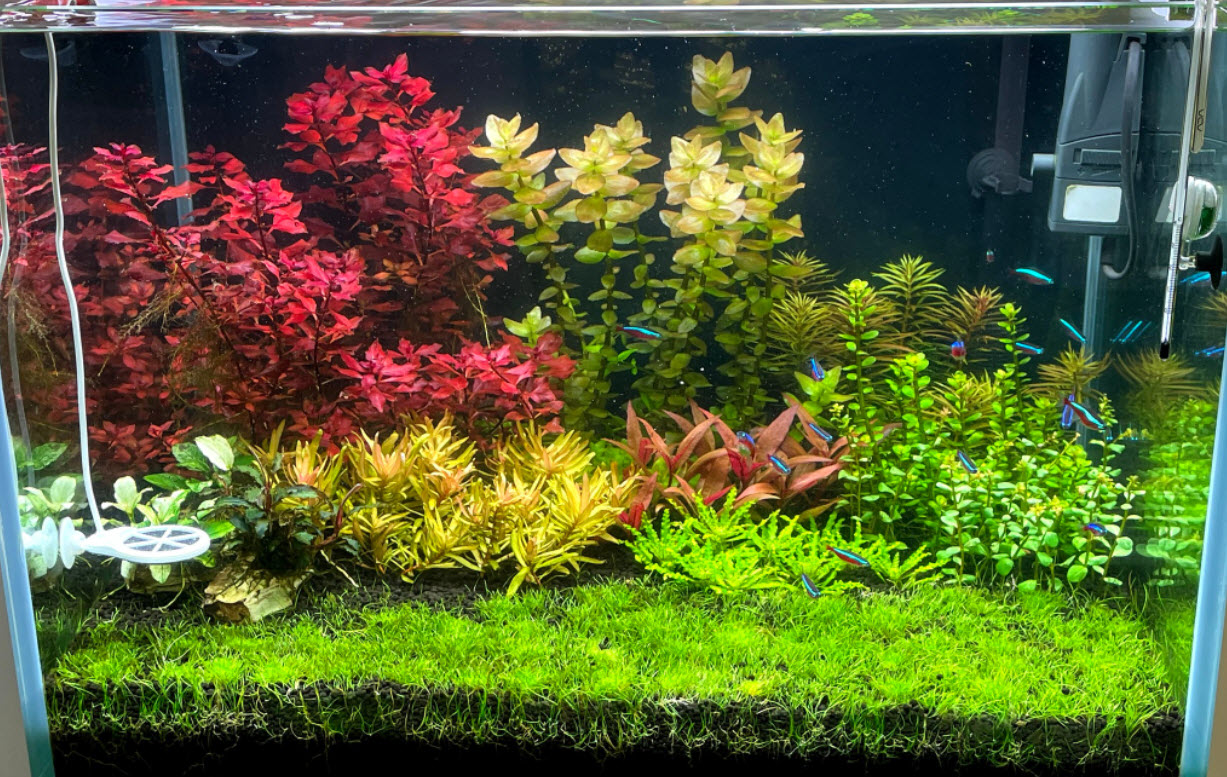
Preprepared Fertilizers
There are two distinct types of preprepared aquarium fertilizers. One is a complete “macro” fertilizer that is useful in aquariums with a lot of plants and few fish. The second type is only “micros” and ONLY slightly useful (at great expense!) in fish aquariums with a few plants in them.
A good chart from Reddit is the following:
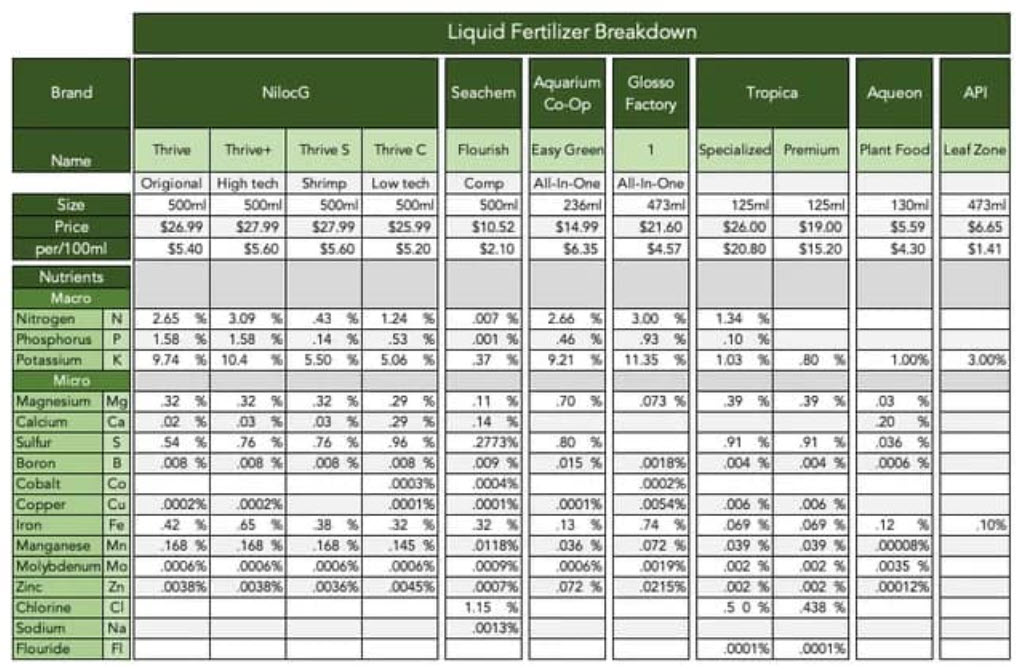
Ready Made Macro Fertilizers
I found only a few preprepared macro fertilizers:
- Aquarium Co-op Easy Green NPK 2.7-0.5-9
- Nyloc G Macro NPK of 1.7-1.3-7
- Nyloc G Thrive NPK of 2.6-1.58-9.7
- Dennerle NPK Booster NPK of 2.5-0.1-0.5 (too little potassium!)
- The Two Hour Aquarist APT Complete NPK of 1.8-0.7-3.8
- Glosso Factory All in One Fertilizer NPK of 2.7-1.5-12
The only one I can’t recommend is the Dennerle. Potassium that low will allow algae to take off. Note that the NPK numbers are a bit flaky when it comes to phosphorus and potassium as it is unclear whether or not the manufacturer is using P2O5 or K2O or P and K to measure the PK portion of the NPK.
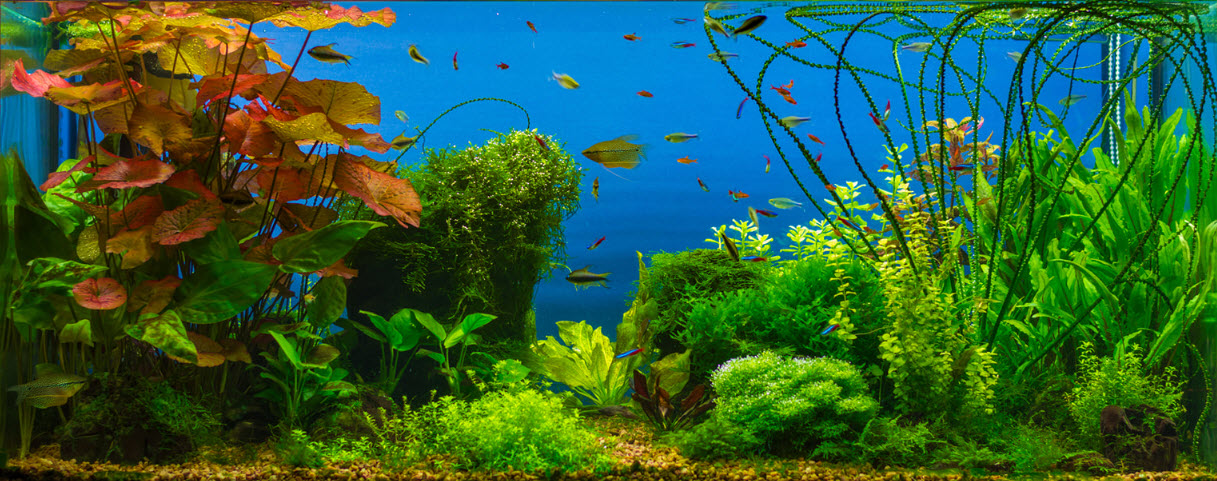
Micro Fertilizers
What is confusing is that there is then a whole list of various micro fertilizers that advertise themselves as “complete fertilizers”. These fertilizers only give a very small leg up for plants in ONLY aquariums with a sizable stock of fish. With these fertilizers, the macros of nitrogen, phosphorus, and potassium come from the fish food, not the fertilizer. So calling these “complete fertilizers” is very misleading, to say the least. These “micro” fertilizers include:
- Seachem Flourish
- Micro-lift Fertilizer
- Aqueon Plant Fertilizer
- API Leaf Zone
- Fluval Grow
I do not recommend an aquarium with a lot of fish and a few plants. The aeration needed for the fish generally removes the carbon dioxide which feeds the plants. As such I have no use for any of these micro fertilizers. In any case, a smidgen of cheap ferrous sulfate from the garden shop will accomplish the same thing in any fish aquarium with a few plants in it. And at a LOT lower cost.
Note that the exact amount of ferrous sulfate just depends on the plant loading. It will range from a sesame seed of ferrous sulfate once a months for lightly planted, low tech tanks to a grain of rice twice per week for heavily planted CO2 injected tanks.
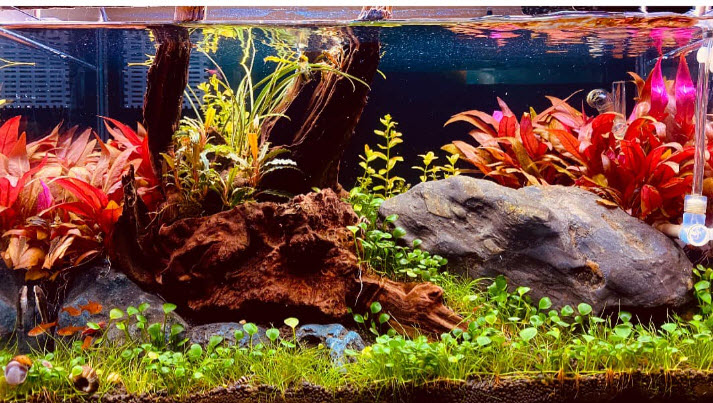
Aquarium Co-Op Easy Green™
It is illustrative to look at one particular complete fertilizer, Aquarium Co-Op Easy Green™ . It is a “complete” fertilizer in that it contains nitrogen, potassium, and phosphorus (NPK of 2.7-0.5-9). This NPK is exactly what the research literature says is the best fertilizer for aquatic plants.
Easy Green™ is a solution added to the water column. The recommended dose is one millimeter of the solution per ten gallons once a week for low light planted aquariums and one milliliter of solution per ten gallons twice a week for moderate light aquariums.
The math for Easy Green™ is pretty simple:
- Nitrogen content is 2.7%. 2.7% of one milliliter is 0.027 grams of nitrogen
- 0.036 grams per 10 gallons is 1 ppm
- There are 3785 milliliters in a gallon
- 1 milliliter in ten gallons is 1/37850 = 0.000026 or 26 parts per million
- 0.027 x 26 = 0.7 part per million nitrogen per dose
- Low light Planted Aquarium – 0.7 parts per million nitrogen per week, 0.26 million phosphates (260 parts per billion), and 2.3 parts per million potassium.
- Moderate light Planted Aquarium – 1.5 parts per million nitrogen per week, 0.52 million phosphates (520 parts per billion), and 4.6 parts per million potassium.
- High light High Tech- While Aquarium Co-op doesn’t make a recommendation for this, a reasonable schedule is; 7 parts per million nitrogen per week, 2.6 million phosphates, and 23 parts per million potassium.
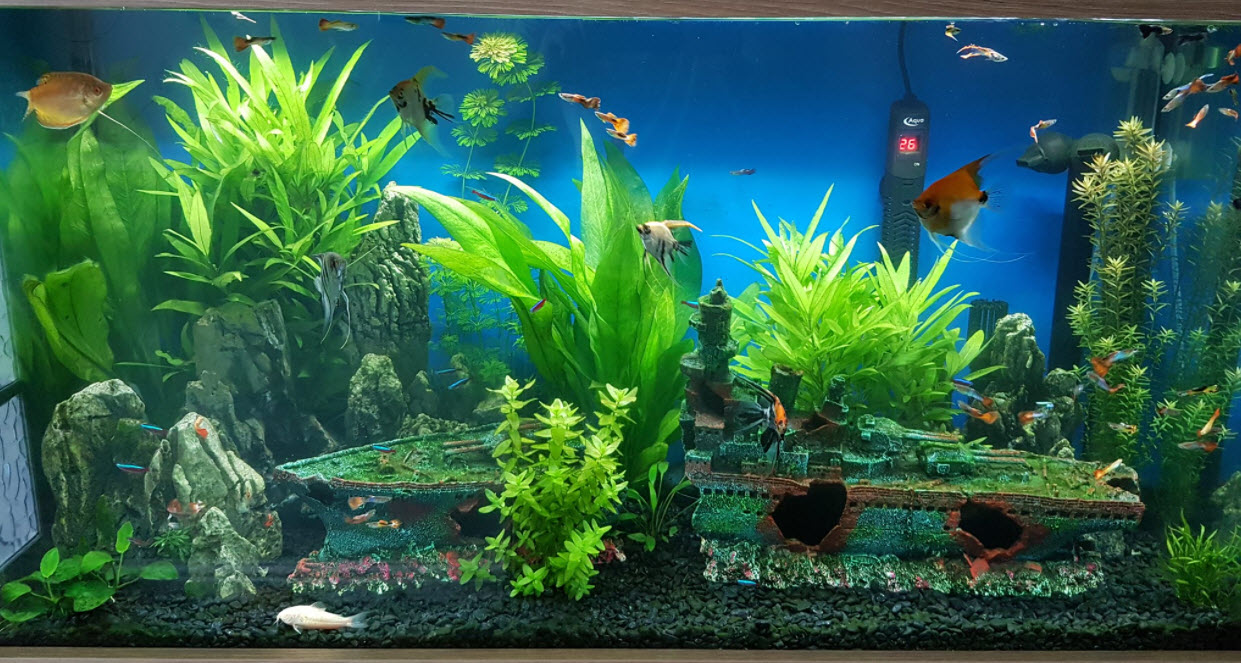
The cost over five years for an 80-gallon high-tech planted aquarium using Easy Green™ is roughly $832. The cost of the chemicals used to make the homemade fertilizers per the “NH4 plus Tabs Fertilizer” recipe in the link below or the EI method is roughly $45.62 up front and the chemicals will last at least five years and probably more than ten years.
$45.62/$832 = 5.5%. I.e., the profit margin here for Aquarium Co-op is 94.5% if you keep the aquarium for five years. If you keep the aquarium for ten years and use homemade fertilizers you will save $1618.38. Interesting.
One Facebook individual had two established planted tanks fertilized with Easy Green™ on the same schedule. One was doing great while the other was pea soup green. In one tank the stem plants were probably healthy and keeping the algae at bay. In the other tank, the plants were not healthy and the fertilizer is just fueling an algae bloom. Interesting! I’ve had very similar experiences. This is why one has to wait on plants to start putting out shoots before fertilizing them
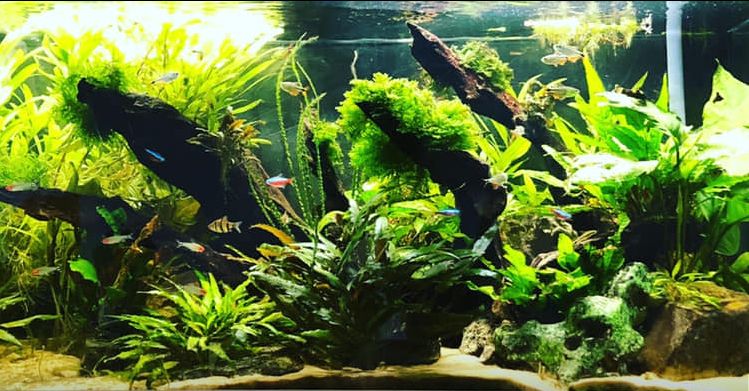
Commercial Aquarium Plant Fertilizer Profit Margin
All of the “complete” fertilizers for a planted aquarium charge a rather large profit margin. To give one an idea of the profit margins, let’s look at one product:
NilocG Aquatics Thrive all in one Liquid Fertilizer™
- Total Nitrogen(N)……………….2.56%
- Available Phosphate(P2O5)…….1.58%
- Soluble Potash(K2O)………………9.74%
$18 for half a liter.
One can use Miracle Grow™ Garden fertilizer and potassium sulfate to duplicate this product for a cost of about $4. That’s a 78% profit margin. If one is buying the chemicals in 50-pound bags, the profit margin becomes about 97%.
Note that there is a choice when it comes to a fertilizing schedule:
- Fertilize per the bottle
- Fertilize when nitrate drops below a certain point, like 20 ppm.
- Fertilize only when nutrient deficiencies show up
- Test everything: nitrate, phosphate, and potassium and add chemicals accordingly
- Use the EI methodology of 50% to 75% water changes every week and add a LOT of fertilizer.
Hobbyists are successful with any of these methods and an off-the-shelf fertilizer.

Commercial Plant Fertilizer Tablets
Plant tabs are small capsules that are inserted into the substrate to deliver the fertilizer rooted plants need directly to the roots. This will prevent algae growth in the aquarium and is the preferred method of fertilizing rooted plants.
Aquarium Coop also has some root tabs made with a nitrogen /phosphate /potassium fertilizer, soil, and clay (NPK 2.5 – 1.6 – 10). API root tabs are the clay, cotton fibers, and a 3-1-1 nitrogen/phosphate/potassium fertilizer. Both work well to add the phosphorus directly to the roots of the plants.
Nilocg Thrivecaps™ are soil, clay, iron, and a complete fertilizer that includes phosphorus. I can’t recommend any fertilizer that has both iron and phosphate in it. Iron and phosphate will cancel each other out.
IF and ONLY IF one has a small substrate like sand or fine gravel, then the Coop and the API tabs are a very good choice for placing deep into the substrate under the plant. I highly recommend them IF and ONLY IF the substrate has particles less than 2 millimeters in diameter.
Large diameter substrates and under-gravel filters have such a large exchange rate with the water column that tabs do little. The nutrients enter the water column almost as soon as they leach out of the tabs.
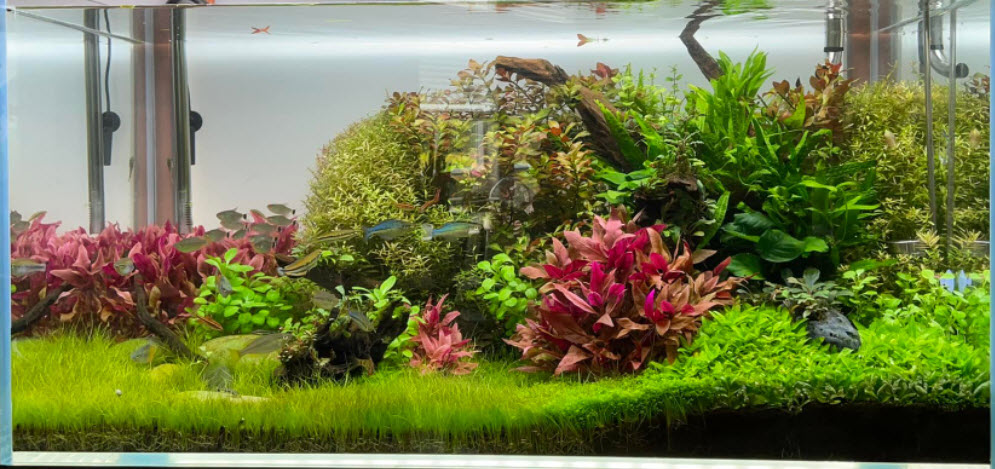
Fertilizers in More Depth
We go into aquarium fertilizers in more depth in the following links:
15.5. Aquarium Fertilization
15.5.2. Fertilizer Programs
15.5.3. Estimative Index
15.5.4. NH4 + Tabs Fertilizer
15.5.5. DIY Epiphytic Fertilizer
15.5.6 Fish Food as Fertilizer
15.5.7. DIY Fertilization
.
Return to Planted Aquarium Menu
.
Aquarium Science Website
The chapters shown below or on the right side in maroon lead to close to 400 articles on all aspects of keeping a freshwater aquarium. These articles have NO links to profit-making sites and are thus unbiased in their recommendations, unlike all the for-profit sites you will find with Google. Bookmark and browse!
.

Dave says
In reply to anonymous …….. It would be fine as a fertilizer as long as the pH is less than 8.4. The nitrogen MAY be in the form of ammonia which can create problems for the fish at high pHs.
Anonymous says
Hi Dave, I am disappointed with the performance of the aquascape fertilizer sold in my country, they also do not list the contents of the fertilizer and the price is quite expensive. The thing is, fertilizer for gardening is very cheap here, and they list the contents of the fertilizer. And the list goes like this:
N 16.2%
P 15.5%
Κ. 25,4%
Mg. Bo, Ca, Fe etc.
Ga3 (Giberaline Acid) 22%
Auxsin 20%
is it safe for the fish, and is it even usable?
Dave says
It just depends on the plant loading. It will range from a sesame seed of ferrous sulfate once every three months for lightly planted, low tech tanks to a grain of rice twice per week for heavily planted CO2 injected tanks.
LLoyd says
Hello Dave, “As such I have no use for any of these micro fertilizers. In any case, a smidgen of cheap ferrous sulfate from the garden shop will accomplish the same thing in any fish aquarium with a few plants in it. And at a LOT lower cost.”
How do we dose to the tank? and how often?
Thanks ahead,
Lloyd